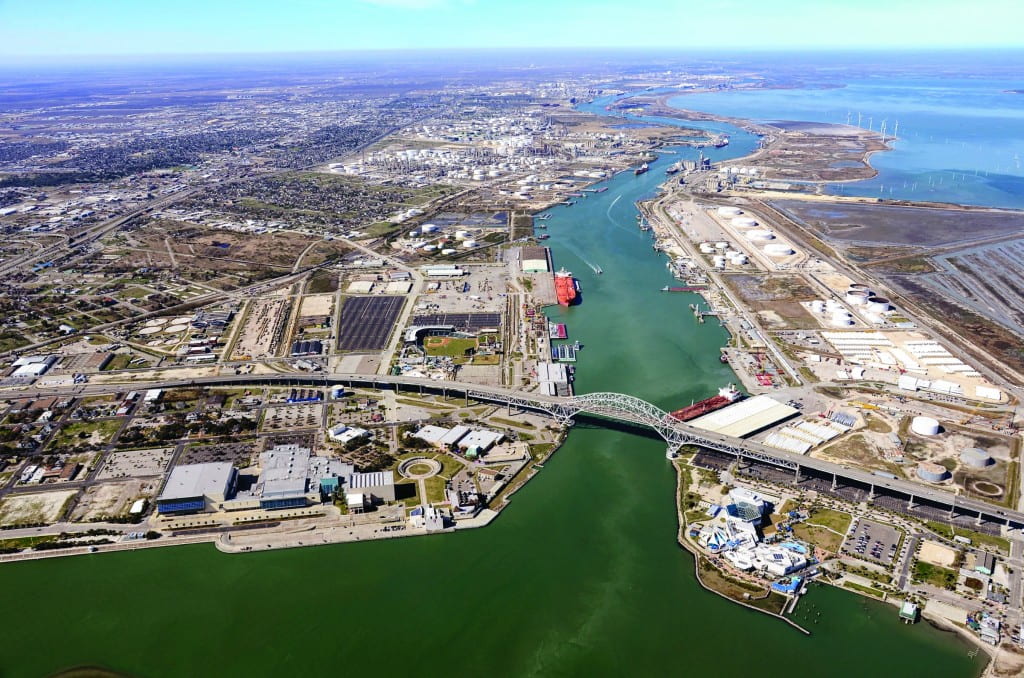Marisa Perales, J.D., is a partner at Perales, Allmon & Ice, P.C. She previously worked for the Third Court of Appeals in Austin and in the Environmental Law Division at the Texas Natural Resource Conservation Commission (now TCEQ). She was a Member and Chair of the City of Austin Environmental Commission. Marisa currently serves on the boards of Texas Campaign for the Environment Fund and Clean Water Action. Perales is a cum laude graduate of the Texas Tech University School of Law.
Texas Commission on Environmental Quality (TCEQ) & the City of Dripping Springs v. Save Our Springs Alliance, Inc.
(Appeal of District Court decision, reversing TCEQ decision, pending in the Eighth District Court of Appeals, in El Paso, Texas)

Blanco State Park
At Issue: Whether TCEQ’s interpretation of Tier 1 and Tier 2 anti-degradation requirements for wastewater discharge permits is consistent with the federal Clean Water Act.
Held:A Travis County district court reversed TCEQ’s decision issuing the City of Dripping Springs its requested wastewater discharge permit because the evidence demonstrated, as a matter of law, that the permitted discharge will lower water quality in the receiving water body by more than a de minimis amount (the Tier 2 anti-degradation standard). The court also found TCEQ’s Tier 1 analysis legally deficient, because TCEQ only considered whether the proposed discharge would impair recreational uses but did not consider harmful impacts on aquatic life uses. Finally, the court held that the required public notice was legally inadequate, because it failed to describe the proposed discharge point.
Background: The City of Dripping Springs sought a wastewater discharge permit (Texas Pollutant Discharge Elimination System [TPDES] permit) from TCEQ, and TCEQ granted the requested permit authorizing the City to discharge up to 822,500 gallons per day of treated municipal wastewater into Onion Creek in Hays County. The portion of Onion Creek that would receive the City’s discharge has been designated as “high aquatic life use,” and is thus subject to the two-tiered anti-degradation rule, per the federal Clean Water Act and TCEQ’s governing statutes and rules, which must be interpreted consistent with EPA’s rules. That is, TCEQ must conduct a Tier 1 and Tier 2 anti-degradation analysis before issuing the City’s requested TPDES discharge permit.
The Tier 1 analysis applies to all water bodies and prohibits impairment of designated water uses, such as recreational and aquatic life uses. The Tier 2 review applies only to waters that exceed water quality necessary to protect aquatic life and contact recreation uses, such as Onion Creek.
The district court held that the predicted increases in nutrient pollution (namely phosphorous and nitrogen), lowered dissolved oxygen, and increased algae growth violated the Tier 2 standard as a matter of law. In reaching this decision, the court refused to defer to the TCEQ’s implied interpretation of the de minimis standard and instead applied a plain language interpretation of the term. The court further rejected TCEQ’s “whole water” approach, rather than a constituent-by-constituent approach, to the required anti-degradation analysis.
The implications of this decision, if upheld, is that TCEQ will have to revise the way it conducts its anti-degradation analysis and apply a more objective threshold for determining whether a discharge satisfies the de minimis exemption. This will likely lead to more determinations that the proposed discharge is expected to lower water quality by more than a de minimis amount, and thus, the agency will have to determine whether the discharge is necessary for economic or social development.
The case is now pending in the Eighth District Court of Appeals, in El Paso, Texas.
County of Maui v. Hawaii Wildlife Fund, 140 S.Ct. 1462 (2020)
At Issue: The issue presented to the U.S. Supreme Court case in the County of Maui case was whether the Clean Water Act “requires a permit when pollutants originate from a point source but are conveyed to navigable waters by a nonpoint source”—via groundwater, for example, as in this case. 140 S.Ct. at 1468.
Held: The U.S. Supreme Court held, in a 6-3 decision, that under the Clean Water Act, a permit is required “when there is a direct discharge from a point source into navigable waters or when there is the functional equivalent of a direct discharge.” Id. (emphasis added).
Background: The County of Maui operates a wastewater treatment facility on the island of Maui. After partial treatment of the sewage, the facility pumps the resulting effluent (about 4 million gallons per day) into four injection wells, which travels for about one-half mile, through groundwater, to the Pacific Ocean.
Environmental groups filed a citizens suit against the County of Maui under the Clean Water Act, alleging that the County was “discharging” a “pollutant” to “navigable waters,” namely the Pacific Ocean, without an NPDES permit, as required by the Clean Water Act. The District Court and the Ninth Circuit Court of Appeals sided with the environmental groups and held that the discharge from Maui’s injection wells into the nearby groundwater was “functionally one into navigable water,” requiring a discharge permit.
In reaching its decision, the Ninth Circuit court of appeals applied a “fairly traceable” standard, holding that a permit is required when “the pollutants are fairly traceable from the point source to a navigable water such that the discharge is the functional equivalent of a discharge into the navigable water.” Maui, on the other hand, argued that the Clean Water Act’s permitting requirements do not apply if a pollutant must travel from the point source through any amount of groundwater before reaching navigable waters.
Recognizing that “all water [including groundwater], polluted or not, eventually makes its way to navigable water,” the Supreme Court held that the Ninth Circuit’s “fairly traceable” standard was too broad. But the Supreme Court agreed with the Ninth Circuit and the environmental groups that Maui’s interpretation—allowing total exclusion of all discharges through groundwater—was too narrow.
The Supreme Court ultimately held that the Clean Water Act requires a discharge permit “when there is a direct discharge from a point source into navigable waters or when there is the functional equivalent of a direct discharge.” 140 S.Ct. at 1468. (emphasis added). The Supreme Court offered seven factors to assist in determining whether an indirect discharge is the functional equivalent of a direct discharge. The Supreme Court advised that distance and time are the key factors for most permitting cases. Id. at 1476-77.
This ruling confirmed that the Clean Water Act requires a discharge permit even when point source pollution discharges are physically distanced from navigable waters.
Application of the Port of Corpus Christi Authority of Nueces County for Texas Pollutant Discharge Elimination System (TPDES) Permit No. WQ0005253000; TCEQ DOCKET NO. 2019-1156-IWD

Port of Corpus Christi
At Issue: The issue in this discharge permitting matter involving a proposed marine seawater desalination plant is whether TCEQ staff’s anti-degradation review was adequate to demonstrate that the receiving water’s designation of “exceptional aquatic life use” will be maintained and that water quality will not be lowered by more than a de minimis amount, if the requested discharge were permitted.
Held:The case is pending a final decision by TCEQ’s Commissioners. The Proposal for Decision, by the Texas State Office of Administrative Hearings’ Administrative Law Judges (ALJs) presiding over this case, recommends that the TCEQ Commissioners deny the requested discharge permit, in part because the Port Authority of Corpus Christi did not prove that the TCEQ staff’s anti-degradation review was accurate and failed to prove that the proposed discharge will not adversely impact the marine environment, aquatic life, and wildlife.
Background: The Port Authority of Corpus Christi applied to TCEQ, seeking a permit to discharge treated effluent from a proposed marine seawater desalination plant to be located on Harbor Island in Nueces County, which would be the first such plant in the State of Texas. The requested permit would authorize the discharge of treated effluent from the desalination plant, consisting primarily of the concentrated brine resulting from the desalination process, into the Corpus Christi Ship Channel approximately 300 feet off Harbor Island’s shoreline. The main constituent of concern in this case is salinity; the discharge will consist primarily of the concentrated salts that remain after the desalination process.
The sensitivity of the proposed discharge location is essentially undisputed. The proposed outfall would be located near the Aransas Pass tidal inlet, one of five major coastal passes connecting the Gulf of Mexico with Texas’s bays and estuaries. It is the main source of productivity and connectivity with the Gulf of Mexico for all the fish and invertebrate populations in the entire region. High salinity or saline imbalances can be fatal to this aquatic life. Tier 1 and Tier 2 antidegradation reviews are required due to the exceptional aquatic life use designation at the outfall location.
In recommending denial of the requested discharge permit, the ALJs found that the TCEQ staff’s antidegradation review failed to demonstrate and the Port Authority failed to prove that the proposed discharge will maintain existing aquatic life uses and will not lower water quality by more than a de minimis amount. In reaching this recommendation, the ALJs acknowledged that TCEQ has not established numerical criteria for salinity, but explained that the absence of numerical criteria does not preclude evaluation. The Texas Water Quality Standards state that salinity gradients in estuaries must be maintained to support attainable estuarine-dependent aquatic life uses, and careful consideration must be given to all activities that may detrimentally affect salinity gradients. The ALJs concluded that the TCEQ staff’s antidegradation review was not sufficient to demonstrate that this standard was met.
The ALJs rejected TCEQ’s usual practice for new facilities such as this one of waiting until after there is a discharge to establish permit limits for pollutants. The ALJs explained that given the sensitive discharge location, its pivotal role in the life cycle of estuarine-dependent species, and the sensitivity of those species to salinity changes, waiting to identify significant problems until after the discharge commences is not sufficient.
Moreover, the ALJs explained that the adverse impacts of the proposed discharge on aquatic life is likely to disrupt fish reproduction to such a degree that that it will result in diminished fish populations, which in turn will adversely impact commercial and recreational activities that depend on fish populations.
TCEQ considered the ALJs’ PFD at its May 19, 2021 public meeting, and the commissioners voted to remand the application back to SOAH to allow for additional evidence addressing a number of specific issues, including whether the Executive Director’s anti-degradation review was accurate. The commissioners set a maximum duration of 120 days for the hearing.
Join Our Mailing List
Subscribe to Texas+Water and stay updated on the spectrum of Texas water issues including science, policy, and law.

